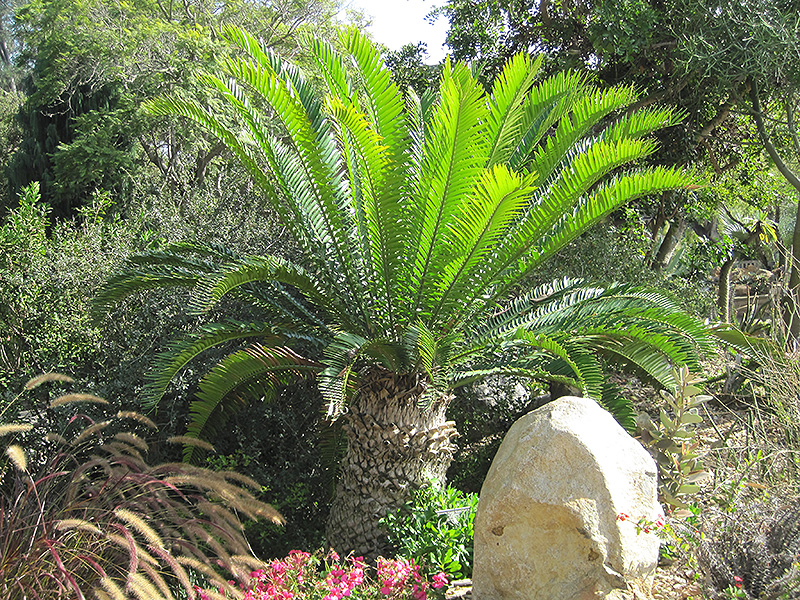Eastern Cape Giant Cycad
Description
A large sized, cycad with long, pinnate leaves of powder blue, maturing to shades of green; will develop a branched or unbranched trunk over a long period; an attractive accent or container plant; must be well drained and prefers slightly acidic soil
Landscape Attributes
Eastern Cape Giant Cycad is a spreading evergreen perennial with a shapely form and gracefully arching foliage. Its relatively fine texture sets it apart from other garden plants with less refined foliage.
Eastern Cape Giant Cycad is recommended for the following landscape applications;
Planting & Growing
Eastern Cape Giant Cycad will grow to be about 15 feet tall at maturity, with a spread of 20 feet. It has a low canopy with a typical clearance of 2 feet from the ground. It grows at a slow rate, and under ideal conditions can be expected to live to a ripe old age of 200 years or more; think of this as a heritage perennial for future generations! As an evegreen perennial, this plant will typically keep its form and foliage year-round. This is a dioecious species, meaning that individual plants are either male or female. Only the females will produce fruit, and a male variety of the same species is required nearby as a pollinator.
This plant does best in full sun to partial shade. It prefers dry to average moisture levels with very well-drained soil, and will often die in standing water. It is considered to be drought-tolerant, and thus makes an ideal choice for a low-water garden or xeriscape application. It is not particular as to soil pH, but grows best in rich soils. It is quite intolerant of urban pollution, therefore inner city or urban streetside plantings are best avoided. This species is not originally from North America, and parts of it are known to be toxic to humans and animals, so care should be exercised in planting it around children and pets..
Eastern Cape Giant Cycad is a fine choice for the garden, but it is also a good selection for planting in outdoor pots and containers. Because of its height, it is often used as a 'thriller' in the 'spiller-thriller-filler' container combination; plant it near the center of the pot, surrounded by smaller plants and those that spill over the edges. It is even sizeable enough that it can be grown alone in a suitable container. Note that when growing plants in outdoor containers and baskets, they may require more frequent waterings than they would in the yard or garden. Be aware that in our climate, this plant may be too tender to survive the winter if left outdoors in a container. Contact our experts for more information on how to protect it over the winter months.

